Speakers & Participants
Masahito Ueda (The University of Tokyo)
Information thermodynamics and fluctuation theorems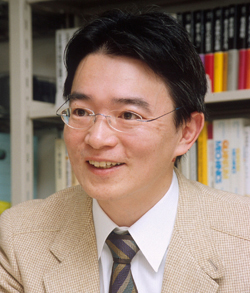
The second law of thermodynamics presupposes a clear-cut distinction between the controllable and uncontrollable degrees of freedom by means of macroscopic operations. The cutting-edge technologies in quantum information and nanoscience seem to require us to abondon such a working hypothesis in favor of the distinction between the accessible and inaccessible degrees of freedom. In this talk, I will talk about the fundamentals of such information thermodynamics together with the related new results on fluctuation theorems.
Yoshiro Takahashi (Kyoto University)
Ultracold Ytterbium Atoms in an Optical Lattice (Slides)
I will report our recent experiments using quantum degenerate ytterbium (Yb) atoms loaded in an optical lattice. We have successfully created Bose-Einstein Condensates of 3 isotopes, and Fermi degeneracies of 2 isotopes, and a Bose-Bose mixture, and two Bose-Fermi mixtures, as well as Fermi-Fermi mixture with spin degrees of freedom. The created Yb quantum gases were loaded into a 3D optical lattice and were studied in several experiments.
Recently we successfully performed the high-resolution laser spectroscopy of bosonic Yb atoms in an optical lattice, which reveals the details of the superfluid-Mott insulator transition.
A Mott insulator state of fermions with SU(6) symmetry is also successfully created owing to the enhanced Pomeranchuk cooling[1]. In addition, we recently discovered magnetic Feshbach resonance between the ground state and the metastable state[2], which will open the possibility for realizing the Cooper pairing of atoms with different electronic states. I will discuss the prospect of topological superfluid by implementing spin-orbit interaction with this system.
Tilman Pfau (University of Stuttgart)
Trilobites and other molecular animals: How Rydberg-electrons catch ground state atoms
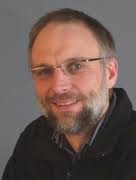
We report on laser spectroscopy results obtained in a dense and frozen Rydberg gas. Novel molecular bonds resulting in ultralong-range Rydberg dimers were predicted [1] and dimers as well as trimers in different vibrational states were found [2]. Some of these states are predicted to be bound by quantum reflection. Lifetime measurements confirm this prediction. Coherent superposition between free and bound states have been investigated [3]. Recently we have also confirmed that in an electric field these homonuclear molecules develop a permanent dipole moment [4]. We recently extended these studies to very large Rydberg bound clusters in a Bose-Einstein Condensate, which also cause mechanical effects in quantum gases once the frozen gas limit is left.
References
[1] C. H. Greene, A. S. Dickinson, and H. R. Sadeghpour, Phys. Rev. Lett. 85, 2458 (2000).
[2] V. Bendkowsky, B. Butscher, J. Nipper, J. P. Shaffer, R. Löw, T. Pfau, Nature 458, 1005 (2009); V. Bendkowsky, B. Butscher, J. Nipper, J. Balewski, J. P. Shaffer, R. Löw, T. Pfau, W. Li, J. Stanojevic, T. Pohl, and J. M. Rost, Phys. Rev. Lett. 105, 163201 (2010).
[3] B. Butscher, J. Nipper, J. B. Balewski, L. Kukota, V. Bendkowsky, R. Löw, and T. Pfau Nature Physics 6, 970–974 (2010).
[4] W. Li, T. Pohl, J. M. Rost, Seth T. Rittenhouse, H. R. Sadeghpour, J. Nipper, B. Butscher, J. B. Balewski, V. Bendkowsky, R. Löw, T. Pfau, Science 334, 1110 (2011).
Vlatko Vedral (University of Oxford/National University of Singapore)
Extracting quantum work statistics and fluctuation theorems by single qubit interferometry
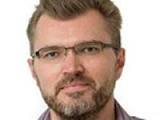
I will first introduce the quantum version of the Jarzynski equality coming from non-equilibrium statistical mechanics. I will then describe an experimental scheme to verify the Jarzynski relations using current technology. Specifically, I will show that the characteristic function of the work distribution for a non-equilibrium quench of a general quantum system can be extracted from Ramsey interferometry of a single probe qubit. I will argue that this scheme paves the way for the full characterisation of non-equilibrium processes in a variety of complex quantum systems ranging from single particles to many-body atomic systems and spin chains. I intend to discuss this work within the context of the Second Law of thermodynamics and the (apparent) irreversibiltiy of natural phenomena.
Christiane Koch (University of Kassel)
Optimal control theory for quantum gates in open quantum systems (Slides)

The standard approach to gate optimization for open quantum systems requires propagation of a full operator basis to evaluate the gate fidelity. We show that the time evolution of three states,irrespective of the dimension of Hilbert space, is sufficient to assess how well a desired unitary is implemented and reconstruct the unitary close to a given open system evolution. This observation also allows for defining an efficient protocol for quantum device characterization.
We apply quantum gate optimization to two transmon qubits that interact via a cavity.
Ite Yu (National Tsing Hua University, Taiwan)
Interaction between Two Stopped Light Pulses (Slides)

The efficiency of a nonlinear optical process is equal to the product of the transition rate and interaction time. If the interaction time can be maximized, it is possible to achieve high efficiency even below single-photon level. Here, we report the experi-mental demonstration that two light pulses were made motionless and interacted with each other through a medium. To demonstrate the enhancement of optical nonlinear efficiency, we used the process of one optical pulse switched by another. A light pulse was stopped as the atomic excitation [1] and another is stopped in the form of the electromagnetic wave [2]. The stored atomic excitation is switched by the stationary electromagnetic wave. Because the two light pulses are motionless, a very long inter-action time of 7 μs was achieved. This interaction time makes our system analogous to the scheme of trapping light pulses by an optical cavity with a very high Q factor of approximately 10^10. Our result shows that motionless light pulses can activate switching at 0.56 photons per atomic absorption cross section [3]. The great potential of the scheme is that the switching efficiency is not limited to the present result but can be further improved by increasing the optical density of the medium. This work advances the technology of low-light-level nonlinear optics and quantum information manipulation utilizing photons.
References
[1] M. Fleischhauer and M. D. Lukin, PRL 84, 5094 (2000); Y. H. Chen, M. J. Lee, I. C. Wang, S. Du, Y. F. Chen, Y. C. Chen, & I. A. Yu, PRL 110, 083601 (2013).
[2] M. Bajcsy, A. S. Zibrov, & M. D. Lukin, Nature 426, 638 (2003); Y. W. Lin, W. T. Liao, T. Peters, H. C. Chou, J. S. Wang, H. W. Cho, P. C. Kuan, & I. A. Yu, PRL 102, 213601 (2009).
[3] Y. H. Chen, M. J. Lee, W. Hung, Y. C. Chen, Y. F. Chen, & I. A. Yu, PRL 108, 173603 (2012).
Yuimaru Kubo (CEA-Saclay)
Hybrid Quantum Circuit with a Superconducting Qubit and an Electron Spin Ensemble (Slides)

We report the experimental realization of a hybrid quantum circuit combining a superconducting qubit and an ensemble of electronic spins (Fig. a). The qubit, of the transmon type, is coherently coupled to the spin ensemble consisting of nitrogen-vacancy (NV) centers in a diamond crystal via a frequency-tunable superconducting resonator acting as a quantum bus[1,2]. Using this circuit, we prepare arbitrary superpositions of the qubit states that we store into collective excitations of the spin ensemble and retrieve back into the qubit later on (Fig. b) [3]. These results constitute a first proof of concept of spin-ensemble based quantum memory for superconducting qubits.We also report a new method for detecting the magnetic resonance of electronic spins at low temperature with a qubit using the hybrid quantum circuit [4].

References
[1] Y. Kubo et al., Phys. Rev. Lett., 105, 140502 (2010).
[2] Y. Kubo et al., Phys. Rev. A, 85, 012333 (2012).
[3] Y. Kubo et al., Phys. Rev. Lett., 107, 220501 (2011).
[4] Y. Kubo et al., Phys. Rev. B, 86, 064514 (2012).
Hidetoshi Katori (The University of Tokyo)
Precise Frequency Comparisons of Optical Lattice Clocks

The performance of clocks is described in terms of accuracy and stability. While single-ion optical clocks demonstrate supreme frequency uncertainty [1] of 0.8×10-17, the necessary averaging time of about 105 s is limited by the quantum projection noise (QPN). The clocks’ stability, therefore, becomes a serious experimental concern when further reducing the clock uncertainty down to 1×10-18. An optical lattice clock improves the clock stability as 1/√N by interrogating a large number N of atoms. By rejecting the Dick effect [2], the Allan standard deviation of 4×10-16/√τ/s was demonstrated [3] to allow exploring 1×10-17 uncertainty in τ ≈ 1,600 s, which corresponded to the QPN limit for N ≈ 1,000 atoms. Currently, the blackbody radiation (BBR) shift is one of the most serious sources of uncertainties for Sr and Yb based optical lattice clocks in achieving 10-17 uncertainty. We are developing cryogenic clocks, in which the interrogated atoms are shielded by 70-K-cold walls, to dramatically reduce the BBR shift. On the other hand, an appropriate choice of atomic species, such as Hg, effectively reduces the BBR shift. We will report the current status of the clock comparison comprising of Sr (x2) and Hg (x2) clocks, both of which we expect to be operated without dead time in the future. We also discuss possible impacts of frequency comparison of two clocks operated in distant places [4], which may allow relativistic geodesy.
References
[1] C. W. Chou, et al. Phys. Rev. Lett. 104, 070802 (2010).
[2] G. J. Dick, J. D. Prestage, C. A. Greenhall, and L. Maleki, in 22nd PTTI Applications and Planning Meeting, 1990), p. 487.
[3] M. Takamoto, T. Takano, and H. Katori, Nature Photon. 5, 288 (2011).
[4] A. Yamaguchi, et al., Appl. Phys. Exp. 4, 082203 (2011).
Yasunobu Nakamura (The University of Tokyo)
Driven artificial atoms in circuit quantum electrodynamics
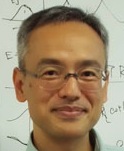
Circuit quantum electrodynamics has proved to be a key concept in quantum information processing in superconducting circuits. We have investigated dynamical response of a superconducting flux qubit coupled to a coplanar waveguide resonator. The qubit is read out through a dispersive frequency shift of the resonator, and the signal is amplified by a Josephson parametric amplifier, which allows continuous nondemolition measurement of the qubit evolution. Under a resonant driving field of the qubit, an effective Delta-system is realized in the dressed states, in which we engineer quantum optical functions in the microwave domain.
Kae Nemoto (National Institute of Informatics)
Precise control of NV Centers in Diamond for Quantum Networks
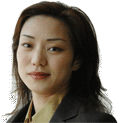
In recent years, NV centers in diamond has attracted significant attention as a candidate for quantum information devices. The negatively charged NV center, in particular, has been intensely investigated [1-3]. NV- centers host both an electron spin qubit and an nitrogen nuclear spin, in our case a nuclear spin-1/2 of 15N is imbedded. The ground state of the electron spin qubit has a long coherence time and an optical transition at 637nm. The nuclear spins may be considered as a long-lived quantum memory, which has been experimentally demonstrated [2]. Because of these preferable quantum properties, NV centers have been considered as a good candidate for implementation of quantum information processing and there has been a number of theoretically propose designs for quantum information processing [3]. Despite of the promising nature of NV diamond, the recent theoretical and experimental developments reveal challenges to achieve the gate fidelity to realize quantum information processing. For instance, there are phonon-involved transitions and state mixing in NV centers. Even though these events might occur with relatively small possibilities, these could lead the whole quantum information system to be catastrophic failure. In this presentation, we discuss these physical imperfections and how we can control them to achieve the accuracy for the information task at hand.
References
[1] Michael Trupke, William J. Munro, Kae Nemoto and Jörg Schmiedmayer, Progress in informatics, No.8, pp. 33-37,(2011), and also see the references in this article.
[2] E. Togan, Y. Chu, A. S. Trifonov, L. Jiang, J. Maze, L. Childress, M. V. G. Dutt, A. Sorensen, P. Hemmer, A. S. Zibrov, and M. D. Lukin, Nature (London) 466, 730 (2010)
[3] N. Y. Yao, L. Jiang, A. V. Gorshkov, Z. X. Gong, A. Zhai, L. M. Duan, I. Cirac and M. D. Lukin., Phys. Rev. Lett. 106, 040505, (2010).
Hideo Mabuchi (Stanford University)
Coherent feedback and quantum photonic circuit theory

Methods being developed for the analysis of coherent feedback in quantum control provide an important new foundation for quantum photonic circuit theory. In this talk I will review basic ideas of coherent feedback analysis and paint a picture of how contemporary approaches in electrical engineering can be expanded to accommodate quantum coherence, fluctuations, and entanglement in complex photonic circuits. I will mention motivating applications both in ultra-low power classical information processing and in quantum information processing, show some related experimental results in cavity QED, and present some new ideas about high-level circuit architectures that are well matched to the physics of nanophotonics and quantum optics.
Klaus Mølmer (University of Aarhus)
Needles in hay stacks - quantum memories with inhomogeneous spin ensembles

A recent proposal to implement multi-bit quantum memories in large spin ensembles will be reviewed. The long lifetimes achievable in spin systems and the strong interactions and fast processing in circuit cavity quantum electrodynamics are combined into a hybrid quantum computing device. Rather than storing the qubit information in individual spins, every qubit is stored collectively as a spin wave. This amplifies the weak single spin interaction with the cavity field by many orders of magnitude, but the scheme is prone to decoherence due to inhomogeneities in the spin coupling strengths and transition frequencies. New theoretical analyses will be presented, which address the imperfections and losses in the system and which show that inhomogeneous broadening can be refocused and is, indeed, a useful property of the spin system.
Eugene Polzik (University of Copenhagen)
Quantum teleportation with macroscopic material objects

The recent experiment on quantum teleportation between macroscopic spin oscillators will be described [1]. The deterministic teleportation allows for the better-than-classical transmission of dynamically evolving sequence of spin states from one location to another. The extension of the idea of an oscillator with a negative frequency from spin ensembles to entanglement and measurements beyond the standard quantum limit with mechanical oscillators will be introduced. Finally, quantum optical interface with the electronic radio-frequency oscillator via strong electro-mechanical coupling will be reported.
References
[1] H. Krauter et al. To appear in Nature Physics. arXiv:1212.6746.
Christian Kurtsiefer (Centre for Quantum Technologies, Singapore)
Coupling single photons to single atoms (Slides)
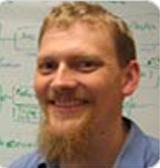
A common combination of physical systems that allows a scaling up from single qubit demonstrations to more complex structures for quantum information purposes requires efficient bidirectional atom-light interfaces. While the transfer from atomic states to light is efficiently taken care of by a spontaneus emission process, the reverse part is practically much more challenging, since typical light sources that generate simple entangled states or even single photon states are not necessarily compatible with atomic transitions.
Here, I present our efforts of mode matching of propatating photonic modes with atomic emission/absorption modes both spatially and temprorally for the atomic side, using a strong focusing approach and a rising exponential temporal profile of the photonic mode corresponding to time-reversed spontaneous emission solutions.
On the photon side, I present a bright correlated narrowband photon source based on parametric conversion in a cold atomic ensemble that is able to generate photon pair states which are spectrally compatible with atomic transitions. Due to the time scales involved, both homodyne measurements and a detection with photocounting detectors are possible, and we can show that such a source can generate heralded single photon pulses with a rising exponential envelope.
Participants
Massignan, Pietro
Synthetic gauge fields for ultracold atoms in synthetic dimensions (Slides)
Michèle Heurs
Exploring coherent feed-forward control for quantum noise cancellation in interferometric gravitational wave detectors (Slides)
Wei Cui
Feedback Control of Rabi Oscillation in Circuit QED (Publication / Slides)
Cecilia Cormick
Dissipative preparation of steady-state multipartite entanglement (Publication / Slides)
Andreas Ruschhaupt
Shortcuts to adiabaticity (Slides)
Florian Mintert
Optimal control of quantum coherence in disordered composite quantum systems (Slides)
Mikio Nakahara
Concatenated Composite Pulses: Toward High-Precision Quantum Gate Implementation (Slides)
Quantum control of four-level systems beyond adiabatic regimes (Slides)
Emi Yukawa
SU(3) spin-nematic squeezing in a collective spin-1 atomic system (Publication / Slides)
Gary Wolfowicz
Atomic clock transitions in silicon-based spin qubits
Veronica Ahufinger
Single-site addressing of ultracold atoms in an optical lattice via position dependent adiabatic passage (Publication / Slides)
André Xuereb
Exploring fundamental physics with optomechanics and matter-wave interferometry (Slides)
Joy Allen
Routes to Quantum Turbulence in Trapped Bose-Einstein Condensates (Slides)
Kasper Jensen
Ensemble magnetometry with Nitrogen-Vacancy centers in diamond (Slides)
Simon Devitt
Resource estimation, control and optimization for topological quantum computing (Slides)
Elham Hosseini Lapasar
Two-Qubit Gate Operation Applied on Nearest Neighboring Qubits in a Neutral Atom Quantum Computer
Yutaka Shikano
Exciton-Polariton Condensation in High Excitation Density Regime (Slides)
Søren Gammelmark
Efficient Bayesian parameter inference from continuously monitored quantum systems (Publication / Slides)
Tomasz Paterek
Quantum coherence and sensitivity of avian magnetoreception (Publication / Slides)
Robabeh Rahimi Darabad
Multi-Run Quantum Error Correction in Coupled Electron-Nuclear Systems (Slides)
Samanta Piano
Towards using atom chip technology to map and control solid-state devices (Slides)
Lucas Céleri
Thermodynamic cost of acquiring information
Bruno Julia-Diaz
Shortcut to adiabaticity for the fast production of spin-squeezed states in bosonic Josephson junctions (Publication / Slides)
Yi-Hsin Chen
Optimizing fidelity in the electromagnetically-induced-transparency-based optical memory (Slides)
Angela White
Measures of turbulence in Bose-Einstein condensates (Publication / Slides)
Eva Bookjans
Quantum State Tomography of a Single Polariton State of an Atomic Ensemble (Slides)
Agata Checinska
Quantum coherence witness from Quantum Zeno dynamics (Slides)
Johannes Borregaard
Heisenberg limited atomic clocks in the presence of decoherence (Publication / Slides)
Ralf Kohlhaas
Feedback control of coherent spin states in atomic interferometers (Slides)
Christine Khripkov
Coherence dynamics of kicked Bose-Hubbard dimers: Interferometric signatures of chaos (Publication / Slides)
Carole Addis
Two-qubits Non-Markovianity induced by a Common Dephasing Environment (Publication / Slides)
Tobias Grass
Dynamics of quasihole excitations as a detection tool for quantum Hall phases (Slides)
Caroline Blackley
Feshbach resonances in an ultracold mixture of 85Rb and 133Cs (Slides)
Farina Kindermann
Single Neutral Impurity Atoms Immersed in an Ultracold Gas (Slides)
Adriana Marais
Decoherence-assisted transport in quantum networks
Gabriela Mogos
Quantum cryptosystems to client-server applications (Slides)
Jesper Levinsen
Attractive atom-dimer interaction on the repulsive side of a 6Li-40K Feshbach resonance (Slides)
Suzanne McEndoo
Non-Markovian probes in ultracold gases (Slides)
Alexander Badrutdinov
Electrons on helium: towards quantum engineering (Slides)
Steve Campbell
Global correlations in finite-size spin chains (Slides)
Tara Hennessy
Tapered optical nanofibres as detectors for trapped atoms in a 1D optical lattice (Slides)
Thomas Fogarty
Creating N00N states in a free oscillation atom interferometer (Slides)
Chandrashekar Madaiah
Secured Quantum Memory by Induced Localization (Slides)
Jeremie Gillet
Tunneling, self trapping and manipulation of higher modes of a BEC in a double well (Slides)
Lee O'Riordan
Simulating 3D atomic dynamics using a GPU accelerated split-operator method (Slides)
Yongping Zhang
Bose-Einstein condensates in spin-orbit coupled optical lattices (Slides)



